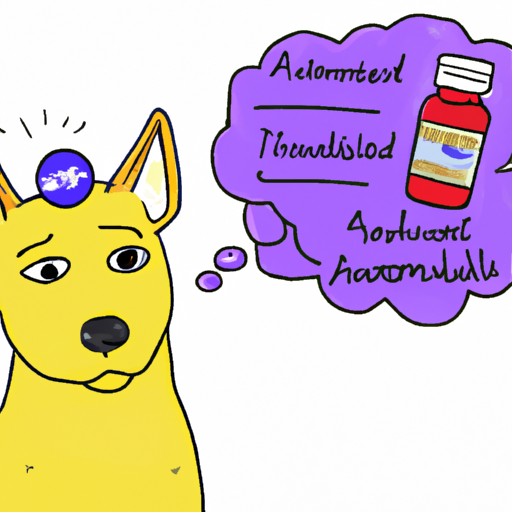Amantadine, a medication that’s been around since the 1960s, has been repurposed over the years for different uses, including as a treatment option for our beloved canine friends. But what exactly is amantadine and how does it benefit our dogs? Let’s delve in to find out.
Understanding Amantadine
Initially, amantadine was introduced as an antiviral drug. However, it was later discovered that it had properties that could help manage pain in both humans and animals. In dogs, it is often used as an adjunctive therapy, which means it’s used in conjunction with other medications for the treatment of chronic pain, particularly for arthritis or cancer.
How Amantadine Works
The drug works by blocking a specific type of receptor in the body called the NMDA receptor. This receptor plays a significant role in amplifying pain signals within the nervous system. By blocking these receptors, amantadine can help to reduce the perception of pain, offering your furry friend some much-needed relief.
When to Use Amantadine
While your vet is the best person to decide when it’s appropriate to use amantadine, it’s often used when:
- Your dog’s pain isn’t adequately controlled by other pain medications.
- Your dog has nerve pain, such as from a spinal cord injury or a nerve impingement.
- Your dog has chronic pain, such as from arthritis or cancer.
Possible Side Effects of Amantadine
Like all medications, amantadine isn’t without its potential side effects. Some dogs may experience:
- Nausea
- Diarrhea
- Lethargy
- Agitation
- Increased heart rate
While these are generally mild and resolve on their own, it’s important to monitor your dog closely while they’re on this medication and report any concerns to your vet.
Amantadine Dosage and Administration
The dosage of amantadine will vary depending on your dog’s size, health condition, and the severity of their pain. Your vet will provide specific instructions on how and when to administer this medication.
| Weight of Dog | Typical Dosage |
|---|---|
| Up to 10 lbs | 10 mg |
| 11-20 lbs | 20 mg |
| 21-40 lbs | 50 mg |
| 41-100 lbs | 100 mg |
| 100+ lbs | 150-200 mg |
Note: This table is for reference purposes only. Always follow your vet’s specific instructions.
Frequently Asked Questions (FAQs)
Q: Is amantadine safe for all dogs?
A: While generally safe, it may not be suitable for dogs with certain health conditions, such as kidney disease or seizure disorders. Always consult your vet before starting any new medication.
Q: Can I buy amantadine over the counter?
A: No, amantadine is a prescription medication and can only be purchased with a vet’s prescription.
Q: Can my dog experience withdrawal symptoms if I stop the medication abruptly?
A: Yes, it’s possible. Always follow your vet’s instructions for discontinuing medication.
Q: How long does it take for amantadine to work?
A: This can vary, but many owners report seeing improvements in their dog’s comfort levels within a week or two.
Remember, as a caregiver, your role is crucial in ensuring your pet’s well-being. Always stay informed and don’t hesitate to ask your vet if you have any questions or concerns.



